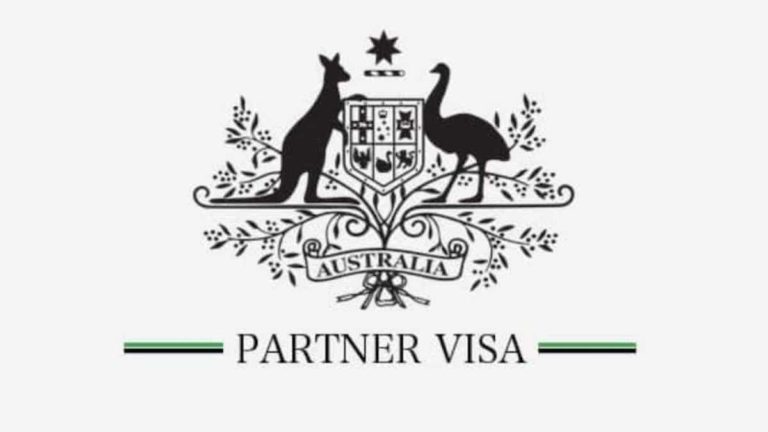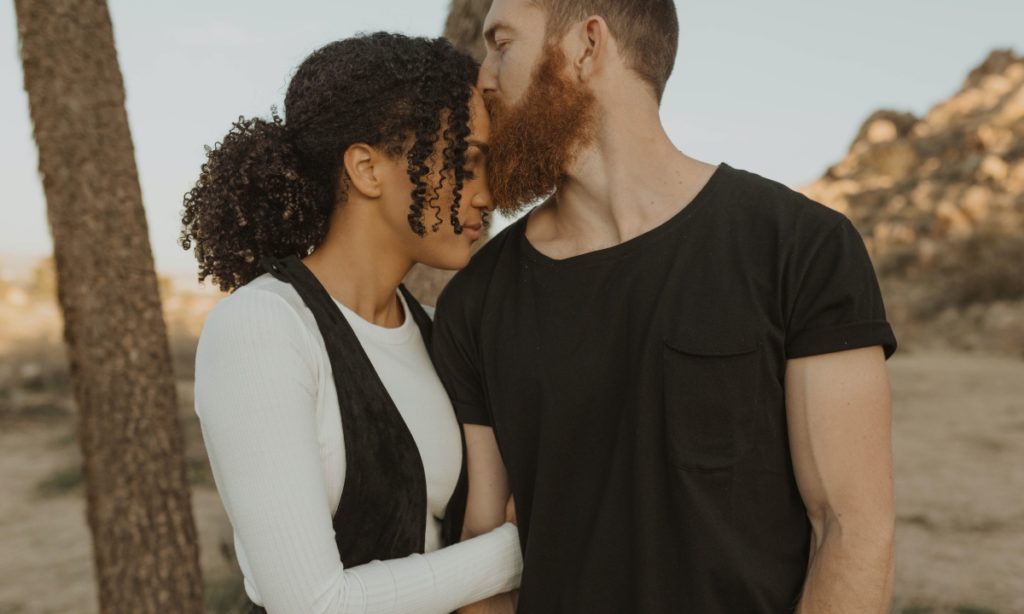
The Partner Visa allows spouses or de facto partners of Australian citizens, permanent residents, or eligible New Zealand citizens to live in Australia. This visa is a pathway to permanent residency and, eventually, Australian citizenship. Here is a comprehensive guide on the conditions and procedures for obtaining a Partner Visa in Australia.
Table of Contents
What Is a Partner Visa?
A Partner Visa allows you to live and work in Australia if you’re in a genuine relationship with:
- An Australian citizen
- An Australian permanent resident
- Or an eligible New Zealand citizen
There are two main categories of Partner Visas in Australia:
1. Temporary Partner Visa (Subclass 820/309):
- Subclass 820: For applicants who are in Australia when they apply.
- Subclass 309: For applicants who are outside Australia when they apply.
2. Permanent Partner Visa (Subclass 801/100):
- Subclass 801: Granted to those who applied for and hold the Subclass 820 visa.
- Subclass 100: Granted to those who applied for and hold the Subclass 309 visa.
The Partner visa application is divided in two steps. First, you apply for a temporary visa (subclass 820 or 309). Two years later, from the date you submitted your first application, you are allowed to apply for the permanent residency (Subclass 801 or 100).
Eligibility to apply for a Partner visa
Relationship Requirements
The relationship can be a marriage or a de facto partnership, including same-sex relationships.
- Spouse: Must be legally married to an Australian citizen, permanent resident, or eligible New Zealand citizen.
- De facto Partner: Must be in a de facto relationship for at least 12 months before applying, unless there are compelling and compassionate circumstances.
Sponsorship
- The applicant must be sponsored by their Australian partner.
- The sponsor must be an Australian citizen, permanent resident, or eligible New Zealand citizen.
- The sponsor must provide support, including accommodation and financial assistance, for the first two years of the applicant’s stay in Australia.
Genuine Relationship
- The relationship must be genuine and ongoing.
- The applicant and their partner must live together, or not live apart on a permanent basis.
- They must prove the legitimacy of the relationship through shared financial responsibilities, cohabitation, social recognition, and mutual commitment.
Health and Character
- The applicant must meet health and character requirements. This includes undergoing a medical examination and providing police clearance certificates from countries where they have lived for 12 months or more in the last 10 years.
What a Partner visa allows you to do
What the 820 or 309 visa allows you to do
It is the first step in the Partner visa application. A subclass 820 or 309 allows you to :
- Live in Australia until a decision is made concerning your permanent visa
- Work in Australia
- Study in Australia (without receiving government funds)
- Apply for Medicare
- Travel in and out Australia as many times as you wish
On the visa subclass 309, you can also get free English classes (up to 510 hours!).
As soon as your partner visa has been approved (subclass 820 or 309), you get permission to stay in Australia permanently (Permanent Residency).
What the 801 or 100 visa allows you to do
This is the second step in the process. Two years after applying for a 820 or 309, you can apply for a 801 or 100 visa. This will allow you to :
- Work and study in Australia
- Apply for citizenship
- Receive social payments from the government (Centrelink, Child Support,…)
- Travel to and from Australia during five years from the starting date of your visa. After five years you will have to apply for a specific visa to keep travelling.

Application Procedure for a Partner Visa
Visa application process in brief
- Gather Evidence: Compile comprehensive evidence of your relationship, including financial records, joint accounts, lease agreements, and social evidence like photographs and statements from friends and family.
- Health and Character Checks: Both partners must undergo health examinations and provide police certificates as part of the character requirements.
- Apply Online: Applications for the Partner Visa are submitted through the Australian Department of Home Affairs’ online platform. The application must be completed accurately, with all necessary documents attached.
What Documents Do You Need?
You will have to prepare a fair amount of documents to prove the authenticity of your relationship. A checklist is available on the government website, going from ID documents to a category “Proof of the authenticity of the relationship”. This last part, very important but also extremely subjective regroups a large selection of documents (photos, personal messages, history of the relationship, etc.).
Documents are divided in thematic:
- Forms about the applicant and the sponsor (47SP and 40SP). Giving information about your identity, your family, your way of life, your incomes but also how you and your partner met, etc.
- Statutory Declarations from family members or friends, witnessing the legitimacy of your relationship
- Official documents justifying the existence of the relationship. It can be a certified copy of your wedding certificate or one from the certificate received after registering your relationship in front of the Australian government.
- Health and character requirement. You will have to go to a medical with specific examinations depending on your native country and the countries you have visited. You will also need to fill in a 20-page form about yourself. A police check is also required for all the countries you lived in for more than a year, for your native country and Australia.
- ID documents for the applicant and the sponsor (passport copy, certified and translated by a certified translator, if not in English, copy of your birth certificate, two passport format pictures, etc.)
- Proof of the authenticity of the relationship. Documents regarding the financial aspect of the relationship, the organisation of your daily life at home, your social life as a couple, your projects etc. You will be asked for a written story about your couple, to send invoices, to explain how you share the chores, to speak about your going out life together, your travels.
All proves can be provided, from bank statements to the picture of your pet or the invoice for your partner’s last birthday present.
Visa application process
Once your documents gathered, you can submit your application: Online via your Immi Account.
Once your application is sent, you will be notified of the reception of the documents and transferred on a bridging visa (it can take a few weeks). A long waiting period starts, you probably won’t have any news from the government for the next few months.
Important note
If applying onshore, the applicant may be granted a Bridging Visa A (BVA) to stay in Australia while the application is processed. Be careful, during this period you aren’t allowed to leave the country. You will have to ask for a specific Bridging visa (B) to be allowed to leave the country for a certain period (fees apply).
Can you include family members?
You can include members of your family unit in your application when you lodge your visa application, or add a dependent child after you lodge your application but before getting a reply for your temporary visa.
Family members who apply with you must be in Australia and meet the health requirement and character requirement.
If you hold or have held a Prospective Marriage visa (subclass 300), you can include family members when you apply for this visa. However, you cannot add them after you submit your application.
Your rights if your application is accepted
You will receive a temporary visa. Two years after the submission of your first application (and not from its approval) you will be able to apply for the permanent residency (Subclass 801 or 100 depending on if you are in Australia or outside Australia when applying for the visa). You might be asked for further medical examination (at your charge).
⚠️ You can obtain your permanent residence directly (i.e. without going through temporary residence) if you prove that your relationship has lasted for more than 3 years at the time of your visa application or if you have a child in common.
Your obligations
Relationship Breakdown: If the relationship breaks down before the permanent visa is granted, the visa application may be affected. However, exceptions exist in cases of family violence or if there are children involved.
Reporting Changes: Both the applicant and sponsor must inform the Department of Home Affairs of any changes in their circumstances, such as a change of address or relationship status.
Cost of the Partner visa
💰 The cost of the Partner visa is $9,095 for the main applicant, $4,550 for any child over 18 and $2,280 for each child under 18 years of age.
❌ The price only includes the visa application; it doesn’t include all the extra costs.
This amount isn’t reimbursable, even if you don’t get your visa. If your visa is not approved you will have the option to appeal the decision.

Processing time
The processing time for Partner Visas can vary significantly based on application volume and individual circumstances. It’s crucial to ensure that your application is as detailed and accurate as possible to avoid delays.
📆 Partner visa applications take time. On average:
- Temporary visa: 6 to 24 months
- Permanent visa: 2 years after your first grant.
Do You Need a Migration Agent?
You can apply on your own or with the help of a registered migration agent.
🧾 An agent can help if:
- Your relationship is recent or complex
- You’ve had previous visa refusals
- You feel unsure about the paperwork
💡 Make sure your agent is MARA-registered.
Tips
Frequently asked questions
The partner visa in Australia is a visa that allows a spouse or de facto partner of an Australian citizen, Australian permanent resident, or eligible visa holder in Australia to live, work, and study in Australia.
The eligibility requirements to obtain a partner visa in Australia mainly include evidence of a genuine and durable marital or de facto relationship, meeting the minimum age requirements, and satisfying health and character criteria.
The processing times for partner visa applications in Australia vary, but generally, it will take several months, or even years.
Yes, once you have obtained a partner visa in Australia, you are authorized to work and study in Australia.
The “temporary partner visa” is initially granted for a specified period and allows the spouse or de facto partner to reside in Australia temporarily. Once certain conditions are met, the application can be updated to a “permanent partner visa,” which offers permanent residency in Australia.
Yes, partners outside Australia can apply for the Subclass 309/100 Partner Visa, which follows a similar process but is designed for applicants outside Australia.


























